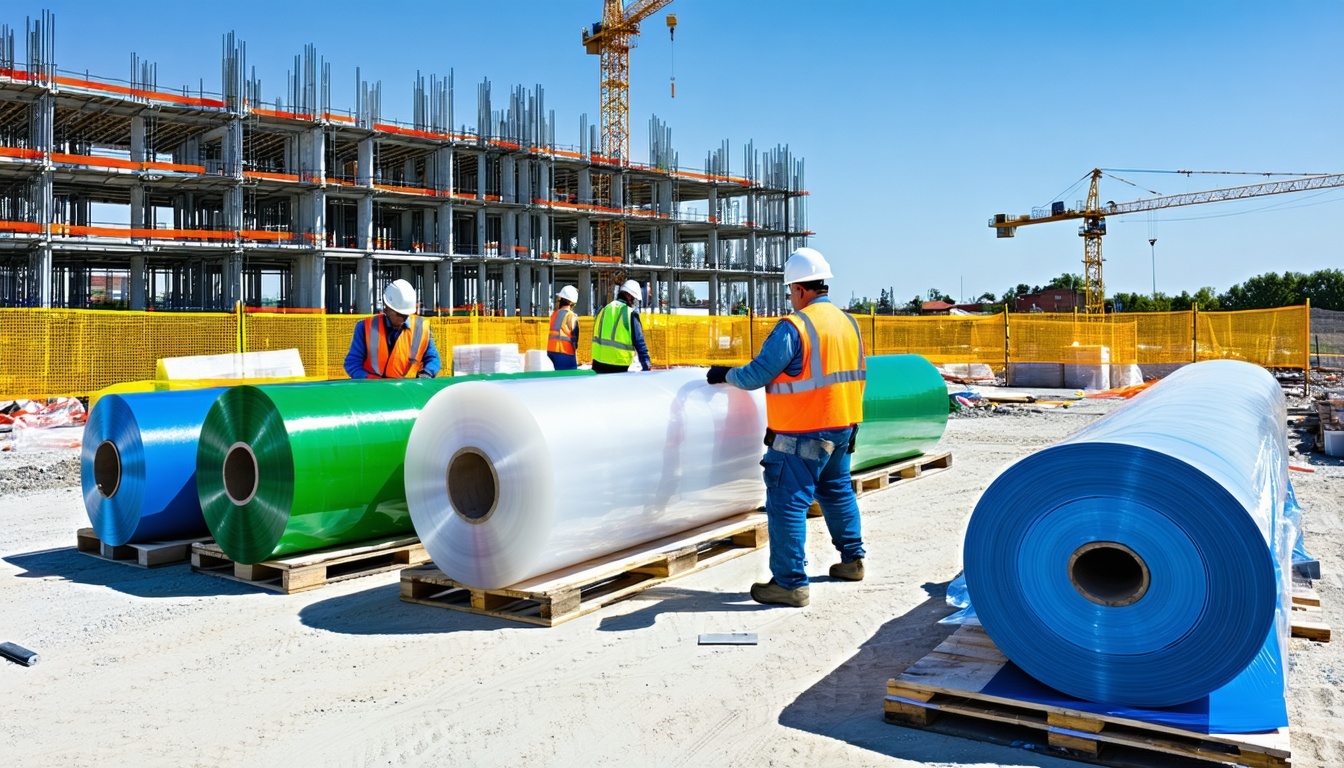Engineered plastic sheeting has become an indispensable material across a multitude of industries, offering versatility, durability, and cost-effectiveness. From construction sites to aerospace applications, the right plastic sheeting can significantly impact the efficiency and success of a project. This guide aims to provide a comprehensive overview of engineered plastic sheeting, its applications, benefits, and key considerations for selection.

Understanding Engineered Plastic Sheeting
Engineered plastic sheeting refers to flat or rolled plastic materials designed with specific properties to meet the demands of various industrial applications. These sheets are manufactured using different polymers, each offering unique characteristics such as chemical resistance, UV stability, thermal insulation, and mechanical strength.
Common Types of Engineered Plastic Sheeting
-
Polyethylene (PE): Known for its flexibility and chemical resistance, PE is widely used in agricultural and construction applications.
-
Polypropylene (PP): Offers excellent chemical resistance and is often used in packaging and automotive industries.
-
Polyvinyl Chloride (PVC): Rigid and durable, PVC sheeting is common in construction for applications like wall coverings and flooring.
-
Polycarbonate (PC): Highly impact-resistant and transparent, PC is used in applications requiring visibility and strength, such as safety guards and glazing.
-
Acrylic (PMMA): Offers clarity and UV resistance, making it suitable for signage and display applications.A&C Plastics
-
High-Density Polyethylene (HDPE): Known for its strength and moisture resistance, HDPE is used in liners and geomembranes.
Applications Across Industries
Construction Industry
In construction, engineered plastic sheeting serves multiple purposes:
-
Moisture Barriers: Preventing water ingress in foundations and walls.globalplasticsheeting.com+1SlideServe+1
-
Vapor Retarders: Controlling moisture diffusion in building envelopes.
-
Temporary Enclosures: Protecting work areas from dust and weather.
-
Concrete Curing Covers: Maintaining moisture levels for optimal curing.
Materials like HDPE and PVC are commonly used due to their durability and resistance to environmental factors.
Aerospace Industry
The aerospace sector demands materials that are lightweight yet strong:Polymershapes
-
Protective Covers: Shielding sensitive components during manufacturing and maintenance.
-
Thermal Insulation: Maintaining temperature control within aircraft structures.
-
Composite Molds: Serving as molds for composite material fabrication.
Polycarbonate and specialized high-performance polymers are preferred for their strength-to-weight ratios and thermal stability.
Agriculture and Horticulture
Engineered plastic sheeting plays a vital role in modern agriculture:
-
Greenhouse Covers: Allowing light transmission while providing UV protection.Wikipedia+1globalplasticsheeting.com+1
-
Mulch Films: Suppressing weeds and conserving soil moisture.globalplasticsheeting.com
-
Silage Covers: Protecting fodder from spoilage.
UV-stabilized polyethylene is commonly used for its flexibility and resistance to environmental degradation.globalplasticsheeting.com
Automotive Industry
In automotive manufacturing, plastic sheeting is utilized for:
-
Interior Panels: Providing aesthetic finishes and insulation.
-
Underbody Shields: Protecting components from road debris.
-
Temporary Protection: Safeguarding surfaces during assembly.
Materials like polypropylene and PVC are favored for their durability and ease of fabrication.
Packaging Industry
Engineered plastic sheeting is essential in packaging for:
-
Blister Packs: Encasing products securely.globalplasticsheeting.com+1Wikipedia+1
-
Protective Wraps: Shielding goods during transportation.
Thermoformable plastics like PET and PVC are commonly used due to their clarity and formability.
Advantages of Engineered Plastic Sheeting
-
Versatility: Suitable for a wide range of applications across industries.globalplasticsheeting.com+3Wikipedia+3globalplasticsheeting.com+3
-
Durability: Resistant to chemicals, moisture, and UV radiation.
-
Lightweight: Easier to handle and install compared to traditional materials.
-
Cost-Effective: Often more affordable than metal or glass alternatives.
-
Customizable: Available in various thicknesses, colors, and finishes.
Considerations for Material Selection
When choosing the appropriate engineered plastic sheeting, consider the following factors:
Environmental Conditions
Assess exposure to UV light, temperature extremes, and chemicals to select a material that can withstand these conditions.
Mechanical Requirements
Determine the necessary strength, flexibility, and impact resistance based on the application.Wikipedia
Regulatory Compliance
Ensure the material meets industry-specific standards and regulations, such as FDA approval for food contact or fire ratings for construction.
Aesthetic Needs
Consider the visual aspects, including color, transparency, and surface finish, especially for applications where appearance is crucial.
Fabrication and Installation
Evaluate the ease of cutting, forming, and joining the material, as well as compatibility with existing equipment and processes.
Conclusion
Engineered plastic sheeting offers a versatile and efficient solution for a multitude of industrial applications. By understanding the specific requirements of your industry and application, you can select the appropriate material that balances performance, durability, and cost. Whether in construction, aerospace, agriculture, automotive, or packaging, the right plastic sheeting can enhance the quality and longevity of your projects.


